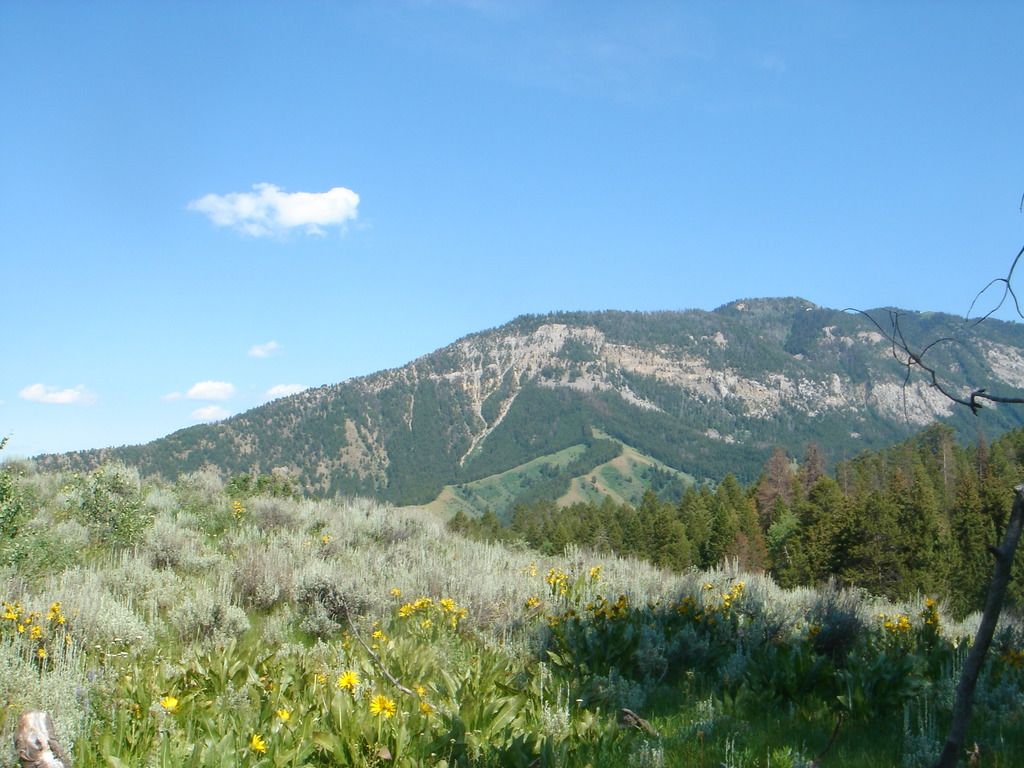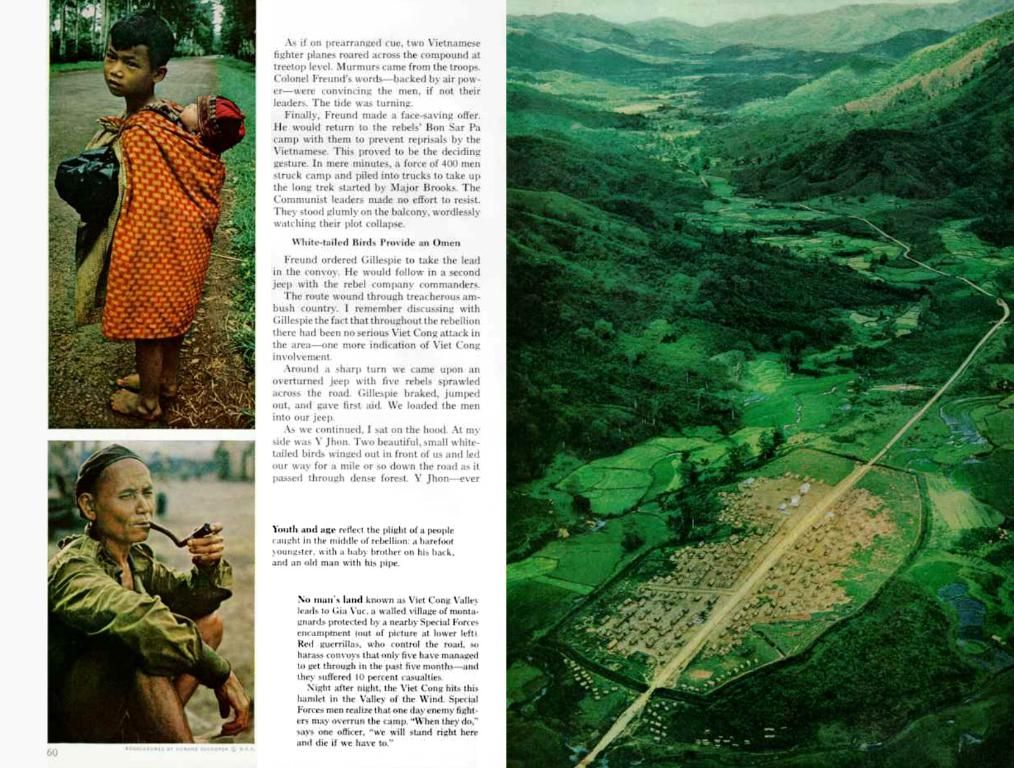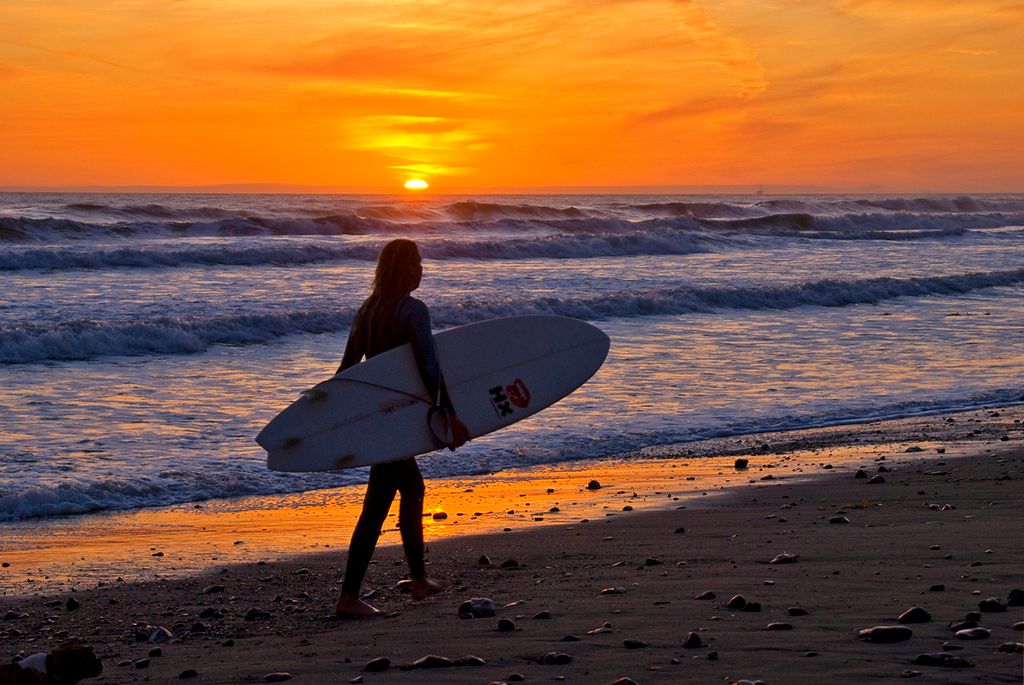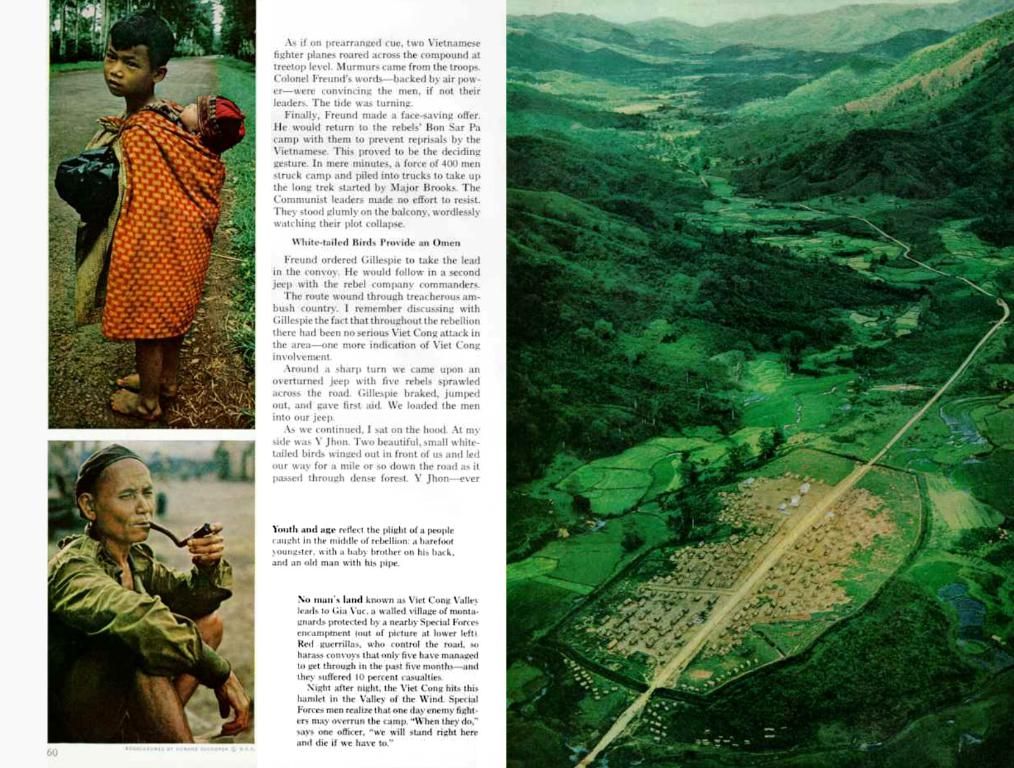Strategies for Constructing an Open Flame: A Step-by-Step Guide
Ready to level up your campfire game? Let's dive in!
You might've tried building a campfire before (after all, who hasn't?) but it resembled more of a smoldering wreck than the roaring blaze you see on TV. Don't worry, we won't judge. It's time to change that!
In this comprehensive guide, we'll uncover the secrets of a well-crafted campfire. From selecting the right wood to actually lighting that sucker, we've got you covered. Before you know it, you'll be the campfire guru your buddies envy!
The Art of Preparation
Before embarking on your adventure, make sure you have the essentials:
Wood: The Foundation of Your Fire
When it comes to firewood, different types burn at various temperatures and rates. Hardwoods, such as oak, hickory, and maple, are your best bet for a campfire. They burn long, hot, and produce less smoke. Softwoods, like pine, should be avoided as they burn quickly and produce a lot of smoke.
Remember: buy your firewood within 10 miles of your destination to prevent spreading invasive forest pests. More on that later!
If you're backpacking and resources are limited, use whatever dry wood you can find – just make sure it's not prohibited in that area.
Tinder and Kindling: Get the Spark Going
Tinder is your dry, fluffy friend that catches fire easily. Examples include dry leaves, grass, or small twigs. Kindling is simply smaller sticks (about 6 inches long) that burn well. You can either bring your own or collect it at your campsite.
Other useful tinder includes commercial fuel woods like Fat Wood, dryer lint, or even toilet paper rolls (as long as they're not glued or taped).
Lighter: Your Safety Backup
Even when you have a fire starter, keep a lighter on hand. It's necessary for your stove and serves as an emergency backup. A waterproof match or two also wouldn't hurt for your survival kit.
Gloves and Fire Poker: Optional but Handy
While not essential, a pair of camp gloves and a fire poker will make your life much easier. Gloves protect your hands from burns and splinters, while a fire poker helps you poke and stoke the fire. Most campgrounds will have leftover fire pokers, but bringing your own could save the day!
Water Bucket: Your Fire's Worst Enemy
Always have a bucket of water nearby to snuff out the fire when it's time to call it quits. Don't worry – the water doesn't have to be drinkable; it can even be from a nearby river or stream.
Campfire Ring: Your Fire's Home
If a designated fire pit isn't available at your campsite, bring your own campfire ring or prepare a makeshift one using rocks. Some metal fire rings can even be used during fire bans, so do your research beforehand.
The Perfect Wood for a Campfire
Backpacking or car camping, make sure your firewood is dry and within 10 miles of your campsite to prevent spreading invasive forest pests. Whenever possible, opt for hardwoods, as they burn longer and hotter, producing less smoke than softwoods.
Common hardwoods include oak, hickory, ash, and cedar. Oak is readily available and burns slowly and steadily, while hickory burns hotter than oak and maple. Ash burns well when green and produces little smoke and minimal moisture, making it ideal for campfires. Cedar is great for cooking due to its pleasing aroma.
Avoid softwoods like poplar, spruce, willow, and alder. Also, steer clear of wet wood if you can; it will be challenging to ignite and burn poorly.
Fire Safety 101
Fire can be dangerous, so take the necessary precautions to ensure safety:
- Educate young ones about fire dangers and the importance of respecting it.
- NEVER leave a campfire unattended – even for a minute!
- Completely put out the fire before leaving your campsite or retiring for the night. Douse the flames with water and make sure there are no glowing embers left.
- Check for fire bans and follow any guidelines provided by park rangers or local authorities.
- Have plenty of water on hand – a utility bucket full works great. Keep it nearby at all times.
- Check the area for dead standing trees and overhanging dead branches that could catch fire.
Shapes and Techniques
Fancy yourself a proper campfire whisperer? Learn the different shapes and techniques to create the ultimate roaring blaze:
Log Cabin
This is our preferred method, as it's easy to maintain for long periods. Make a square structure with larger logs around a smaller teepee of kindling and tinder. Continue to build up layers and alternate your logs parallel then perpendicular until you reach your desired height.
Teepee
This simple technique involves leaning all your sticks together in a teepee shape. While it's harder to maintain, it's a good starting point for beginners.
Platform
Similar to a log cabin but packed more tightly to create a platform, you light the fire on the top of the stack instead of the bottom.
Star
Great for windy conditions, this technique uses whole logs and slowly burns them at the end to create a small but long-lasting fire. As the star fire burns, just push the logs in towards the center to keep it going.
Lean To
In windy conditions or when you need a fire shelter, set up a fire against a windbreaker – a large log or big rock. Lean your sticks on it perpendicularly in a lean-to fashion.
The Art of Building a Campfire
Now that you're well-versed in prepping supplies and various techniques, let's dive into the beautiful, yet complex, art of campfire building:
- Prepare: Make sure there are no fire restrictions in your area before you build a campfire!
- Prepare the Pit: If there's excess ash leftover from previous users, dispose of it properly before starting your own fire.
- Gather Supplies: Have your wood, tinder and kindling, fire starter, and water bucket ready. Chop your wood into smaller pieces – use larger logs once the fire really starts picking up.
- Build Your Shape: Choose your desired shape and break the rules – dust off that inner artist!
- Light it Up: Carefully light your kindling in the middle, ensuring it catches fire before adding larger pieces of wood.
- Stoke the Flame: Gradually add larger pieces of wood to sustain the fire. Keep the fire going by continuing to add large pieces of wood while ensuring good airflow.
- Maintain It: Add more tinder or kindling if the fire starts to dwindle. Keep the fire going without smothering it!
FAQ
What should I avoid burning in a fire pit?
Never burn soft woods, such as conifers or evergreens, or trash and plastics in your fire pit. Doing so may attract critters or even bears.
What's the best wood to burn in a campfire or fire pit?
The best woods for a campfire are hardwoods like oak, hickory, ash, and cedar. They retain minimal moisture, burn hot and for longer periods of time, and produce little smoke.
How do I start a campfire?
Start by preparing your fire pit and gathering wood, kindling, a fire starter, and water. Use the tipi, log cabin, platform, star, or lean-to structure, then light your kindling. Blow gently to help the flames grow, then gradually add larger pieces of wood.
Conclusion
Building and maintaining a campfire is a beloved camping tradition, but it requires responsibility. Make sure you prioritize safety, prepare the right gear, choose the best wood, and learn various techniques to create a campfire that's perfect for your next adventure!
With these tips, you'll be able to enjoy the warmth of a fire, cook delicious treats, and create lasting memories without sacrificing safety or the environment. Happy camping!
- For a campfire that would leave your friends envious, make sure you have the essentials: dry, hardwood like oak, hickory, or maple for the foundation, dry leaves, grass, or small twigs as tinder, kindling (smaller sticks about 6 inches long), a lighter as backup, water for safety, and options such as gloves, fire poker, a water bucket, and a campfire ring.
- If you're backpacking, use whatever dry wood you can find, but remember not to bring in firewood from far away to prevent spreading invasive forest pests.
- To start your fire, choose a shape like the log cabin, teepee, platform, star, or lean-to, and light your kindling carefully. Gradually add larger pieces of wood and maintain good airflow.
- Camping safety is crucial: educate children on fire dangers, never leave the fire unattended, extinguish the fire completely before leaving, check for fire bans, use plenty of water, and survey the area for potential fire hazards.
- Camping lifestyle isn't just about traveling and living outdoors – it also involves respecting the environment and outdoor-living spaces, such as home-and-garden areas, and being mindful of the impact your activities have on nature.




